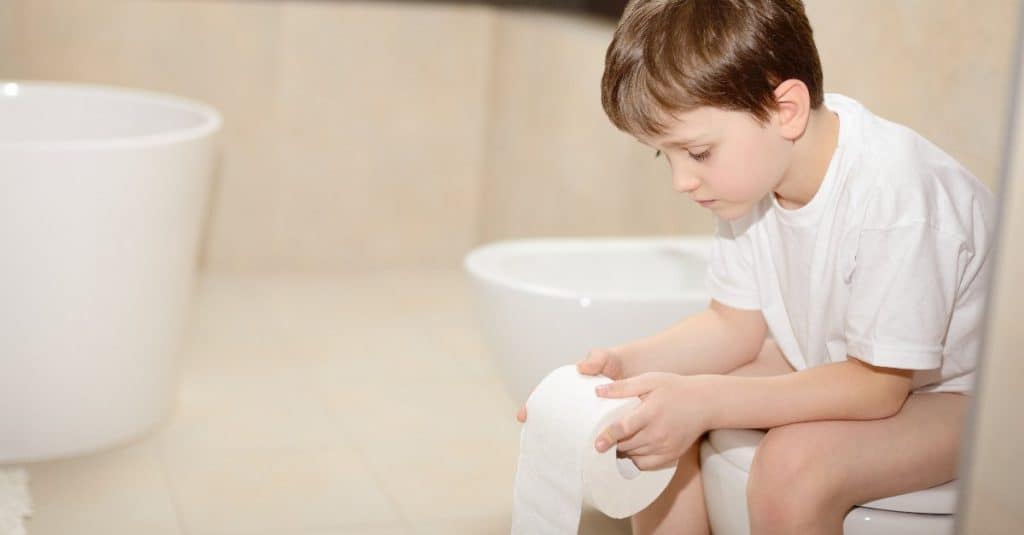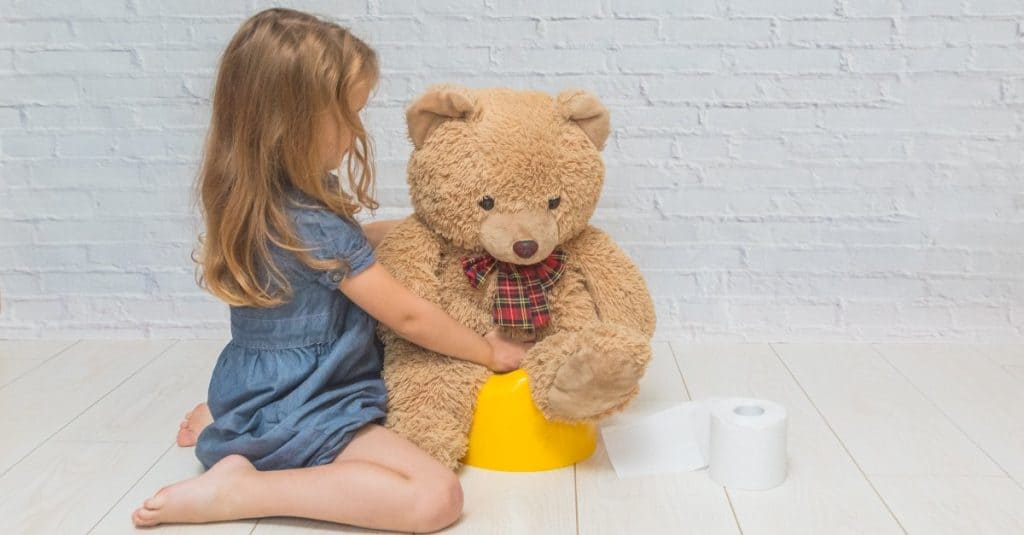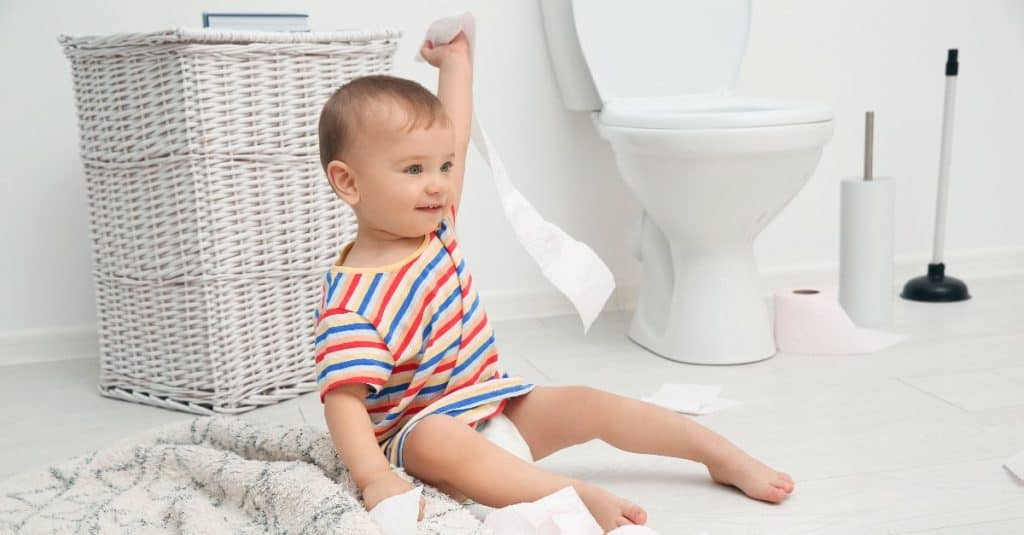Knowing how to wipe after using the toilet is more than just an important step in potty training. It promotes good hygiene and independence, and also saves you from having to bend over to wipe them every time they use the toilet.
What age should a child start wiping themselves? Most children are ready to start wiping themselves between the ages of 3 and 5. By then, their motor skills have developed enough for them to perform the wiping motion, as well as good enough comprehension and understanding to know how to do it properly and (mostly) cleanly.
Children start to express a desire for independence around these years which extends to wiping. Other times, having to learn how to wipe on top of their relatively new and still developing bowel and bladder control skills may be overwhelming, and children may be apprehensive at the idea of wiping on their own.
Signs Your Child is Ready to Start Wiping Themselves

Wiping their own bottom after a bowel movement is a hygiene activity that requires the combined use of fine and gross motor skills. Your child needs to have a good enough sense of balance and proprioception to sit on a toilet and do a bit of maneuvering to reach their backside.
A toilet stool and a potty training insert may help with this. They also need to have enough fine motor development to use wet wipes and toilet roll properly (i.e. folded and not wadded up in a ball).
Your child also needs to be mentally prepared. Wiping is a fairly simple task to accomplish once you get the hang of it, but it does involve a fair number of steps that need to be completed in the right order.
Your child may even outright ask you, “can I wipe my own butt?” after they go. Starting school or kindergarten is another indicator that your child needs to learn to wipe. While your child’s teacher may be able to help them wipe, they do have an entire class that they are responsible for too.
Equally as important as the wiping process is the hand washing that comes afterward. If your child can wash their hands properly for all of 20 seconds, they probably have a fairly good understanding of why they need to keep themselves clean, and may even be more inclined to learn how to wipe themselves.
How to Teach Your Child to Wipe
Manipulating Toilet Paper
Wiping after going number 2 requires the use of several fine motor skills. First, there’s pulling just the right amount of toilet paper for each wipe. You can help your child practice this by marking an “X” on every 5 or so squares, or by placing a sticker on the wall showing your child where to stop.
Then there’s the ripping of the paper. To manipulate toilet paper, children need to have a well-developed pincer grasp. Use thicker 3- or 4-ply toilet paper with clear perforations to help your child identify where to tear.
Finally, there’s the folding the toilet paper flat in their hand, then reaching back to wipe. If your child isn’t quite able to wrap or fold toilet paper yet, using facial tissues, which are larger, usually thicker, and come interfolded, may be easier for small hands to use when wiping.
Children between the ages of 3-5 may not yet be proprioceptive experts, and they may have a few accidental misses with the toilet paper when they attempt to wipe themselves. A pair of disposable gloves may help keep their hands (and yours) clean while they are still mastering how to wipe.
Wipe Front to Back
When you first start teaching your child how to wipe, explain why proper wiping is important. Teach your child that keeping their bottoms clean is an important part of staying healthy and preventing itch and discomfort.
Just as bathing gets them clean again after playing outside, and tooth brushing makes their breath fresh after a meal, proper wiping gets their bottoms clean again after having a bowel movement.
Parents and caregivers also need to take into account gender differences when it comes to potty training. Girls may need a little more instruction and training to remind them to wipe in the right direction.
In general, wiping front to back is more effective and hygienic. It is better for girls and boys alike to be taught to wipe away from their genitals, although it is especially important for girls, in order to prevent urinary tract infections.
Practice Off the Toilet

Yes, it may seem unconventional, but you can teach your child how to wipe themselves off the toilet and outside the bathroom.
Smear a small amount of peanut butter or Nutella on a plate and have your child use toilet paper or a wet wipe to wipe it off. Have them repeat the wiping process until the toilet paper or wipe comes out clean.
Wiping down countertops and tables can also be a good practice exercise that will help your child get used to the wiping motion needed to clean themselves up. It will also help them understand the concepts of clean and dirty as well as the right way to wipe to make things clean.
Play is a child’s main occupation, and acting out pretend scenarios using a few toys may help the understand the same scenarios in real life better. Take a few stuffed animals or dolls and set up a scenario where they need to use the bathroom and wipe themselves afterward.
Many parents also find story books helpful at every stage of the potty training process, and a book geared towards teaching a child to wipe themselves can help a child better visualize the wiping process, especially since they probably won’t be able to see their bottom while they’re wiping.
Use Balloons
Your child needs to master the reaching back motion in order to get a proper front-to-back wipe. While this may seem easy enough for able-bodied adults, children might not yet have developed the dexterity and motor skills necessary for such a task.
Take a pair of balloons, blow them up, and attach them side by side to the back of a chair or stool, right around where their bottoms would be sitting down.
Have your child sit and use wipes and/or toilet paper to reach back and wipe in between the balloon “cheeks”. You can also smear a small amount of peanut butter on the balloons to teach your child to check the toilet paper before dropping it in the bowl. Make things more realistic by having them wash their hands after the activity.
Check After Them

Even though your child may be eager to exercise their newfound independence in toileting, it’s likely that they won’t do a particularly good job wiping them
selves in the beginning. For a young child still learning how to hold a pencil properly, wiping themselves can be a fairly challenging task.
You may want to go back in with another wipe after they do the job, just to make sure that they’ve done a thorough job cleaning themselves, at least for the first couple of months.
Last Words
As much as you may want to fast-track one of the last potty-training hurdles you’ll encounter, it’s important to keep things calm and cool and continue to provide positive reinforcement each time, even when they don’t do it as well as you would have hoped for.
Remember that children all develop at their own pace, and to take care not to make comparisons to siblings and peers. As with all other potty-training goals, be realistic and patient with teaching your child to start wiping themselves. With enough practice and patience, your child will soon be a wiping expert!